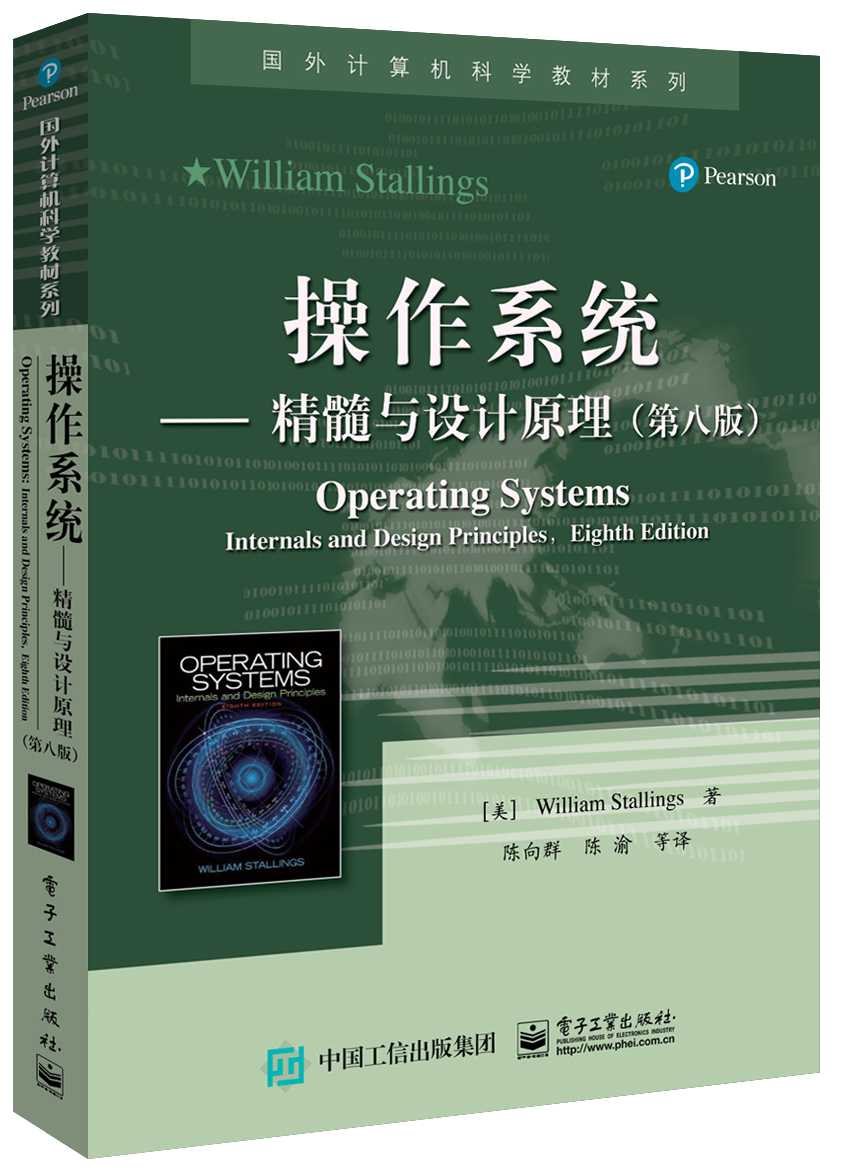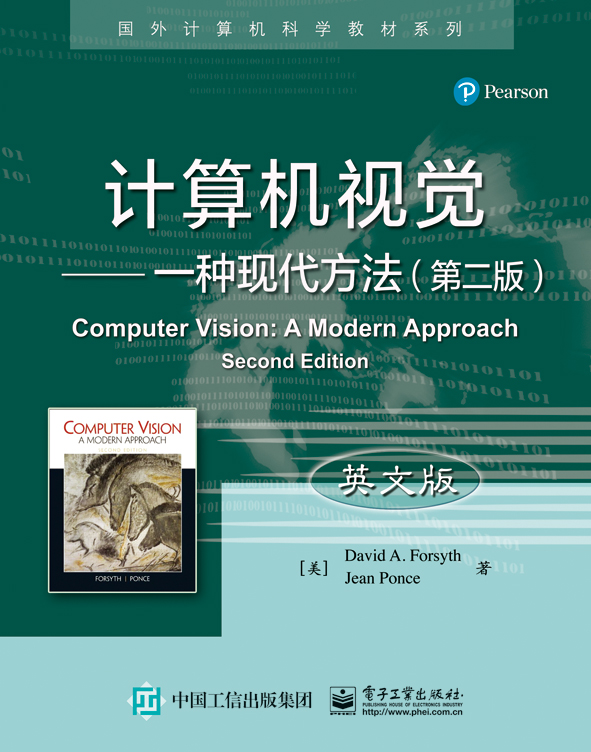- 电子工业出版社
- 9787121240294
- 1-1
- 187507
- 46161593-2
- 平装
- 16开
- 2014-11
- 1140
- 548
- C93
- 工商管理类公共基础课程
- 本科 研究生(硕士、EMBA、MBA、MPA、博士)
内容简介
本书既按照管理学的基本理论框架——计划、组织、领导和控制,又紧紧围绕竞争优势的五个重要因素——成本、质量、速度、创新和服务进行介绍。全书内容丰富实用,既全面介绍了管理学的基本内容,又与创新的理论进展和管理实践密切相关;实践性和时代感强,收录了许多管理案例和实践方法。既能帮助老师有效地组织教学,又能使学生或职业经理人学习到最新的理论和实践方法。
目录
Contents
PART ONE Foundations of Management(管理学基本原理)
Chapter 1 Managing and Performing(管理和执行) 2
1.1 Managing in the New Competitive Landscape 3
1.2 Managing for Competitive Advantage 7
1.3 The Functions of Management 12
1.4 Management Levels and Skills 16
1.5 You and Your Career 20
Key Terms 26
Summary Of Learning Objectives 26
Discussion Questions 27
Chapter 2 The External and Internal Environments(内外部环境) 28
2.1 The Macroenvironment 30
2.2 The Competitive Environment 36
2.3 Environmental Analysis 45
2.4 Responding to the Environment 48
2.5 The Internal Environment of Organizations: Culture and Climate 53
Key Terms 59
Summary Of Learning Objectives 59
Discussion Questions 60
Chapter 3 Managerial Decision Making(管理决策的制定) 62
3.1 Characteristics of Managerial Decisions 63
3.2 The Stages of Decision Making 66
3.3 The Best Decision 73
3.4 Barriers to Effective Decision Making 73
3.5 Decision Making in Groups 77
3.6 Managing Group Decision Making 78
3.7 Organizational Decision Making 82
Key Terms 86
Summary Of Learning Objectives 86
Discussion Questions 87
PART TWO Planning: Delivering Strategic Value(计划:制定战略价值)
Chapter 4 Planning and Strategic Management(计划与战略管理) 90
4.1 An Overview of Planning Fundamentals 91
4.2 Levels of Planning 96
4.3 Strategic Planning 101
Key Terms 117
Summary Of Learning Objectives 118
Discussion Questions 119
Chapter 5 Ethics and Corporate Responsibility(道德与企业责任) 120
5.1 Ethics 123
5.2 Corporate Social Responsibility 134
5.3 The Natural Environment and Sustainability 139
Key Terms 143
Summary Of Learning Objectives 144
Discussion Questions 145
Chapter 6 International Management(管理国际化) 146
6.1 Managing in a (Sometimes) Flat World 147
6.2 The Global Environment 154
6.3 Global Strategy 160
6.4 Entry Mode 168
6.5 Managing across Borders 171
Key Terms 180
Summary Of Learning Objectives 180
Discussion Questions 181
Chapter 7 Entrepreneurship(创业型企业) 182
7.1 Entrepreneurship 186
7.2 Corporate Entrepreneurship 205
Key Terms 208
Summary Of Learning Objectives 208
Discussion Questions 209
PART THREE Organizing: Building A Dynamic Organization(组织:建立动态组织)
Chapter 8 Organization Structure(组织结构) 212
8.1 Fundamentals of Organizing 213
8.2 The Vertical Structure 215
8.3 The Horizontal Structure 222
8.4 Organizational Integration 233
8.5 Looking Ahead 237
Key terms 238
Summary Of Learning Objectives 238
Discussion Questions 239
Chapter 9 Organizational Agility(组织敏捷性) 241
9.1 The Responsive Organization 242
9.2 Strategy and Organizational Agility 244
9.3 Organizational Size and Agility 248
9.4 Customers and the Responsive Organization 253
9.5 Technology and Organizational Agility 260
9.6 Final Thoughts on Organizational Agility 267
Key Terms 268
Summary Of Learning Objectives 269
Discussion Questions 269
Chapter 10 Human Resources Management(人力资源管理) 271
10.1 Strategic Human Resources Management 272
10.2 Staffing the Organization 277
10.3 Developing the Workforce 288
10.4 Performance Appraisal 290
10.5 Designing Reward Systems 295
10.6 Labor Relations 301
Key Terms 305
Summary Of Learning Objectives 305
Discussion Questions 306
Chapter 11 Managing the Diverse Workforce(人力管理多样化) 308
11.1 Diversity: A Brief History 310
11.2 Diversity Today 311
11.3 Managing Diversity versus Affirmative Action 321
11.4 Multicultural Organizations 327
11.5 How Organizations Can Cultivate a Diverse Workforce 330
Key Terms 337
Summary Of Learning Objectives 337
Discussion Questions 338
PART FOUR Leading: Mobilizing People(领导:激励员工)
Chapter 12 Leadership(领导) 340
12.1 What Do We Want from Our Leaders? 341
12.2 Vision 342
12.3 Leading and Managing 344
12.4 Power and Leadership 346
12.5 Traditional Approaches to Understanding Leadership 348
12.6 Contemporary Perspectives on Leadership 359
12.7 Developing Your Leadership Skills 364
Key Terms 366
Summary Of Learning Objectives 367
Discussion Questions 368
Chapter 13 Motivating for Performance(绩效激励) 369
13.1 Motivating for Performance 370
13.2 Setting Goals 371
13.3 Reinforcing Performance 373
13.4 Performance-Related Beliefs 378
13.5 Understanding People’s Needs 380
13.6 Designing Motivating Jobs 383
13.7 Achieving Fairness 388
13.8 Job Satisfaction 391
Key Terms 395
Summary Of Learning Objectives 395
Discussion Questions 396
Chapter 14 Teamwork(团队工作) 397
14.1 The Contributions of Teams 398
14.2 The New Team Environment 399
14.3 How Groups Become Real Teams 401
14.4 Building Effective Teams 404
14.5 Managing Lateral Relationships 411
Key Terms 418
Summary Of Learning Objectives 418
Discussion Questions 419
Chapter 15 Communicating(沟通) 420
15.1 Interpersonal Communication 421
15.2 Improving Communication Skills 430
15.3 Organizational Communication 437
Key Terms 445
Summary Of Learning Objectives 445
Discussion Questions 446
PART FIVE Controlling: Learning and Changing(控制:学习与变革)
Chapter 16 Managerial Control(管理控制) 448
16.1 Bureaucratic Control Systems 451
16.2 The Other Controls: Markets and Clans 472
Key Terms 478
Summary Of Learning Objectives 478
Discussion Questions 479
Chapter 17 Managing Technology and Innovation(管理技术与创新) 480
17.1 Technology and Innovation 481
17.2 Technological Innovation in a Competitive Environment 485
17.3 Assessing Technology Needs 489
17.4 Key Factors to Consider in Technology Decisions 490
17.5 Sourcing and Acquiring New Technologies 497
17.6 Technology and Managerial Roles 500
17.7 Organizing for Innovation 501
Key Terms 506
Summary Of Learning Objectives 506
Discussion Questions 507
Chapter 18 Creating and Leading Change(创造和管理变革) 509
18.1 Becoming World Class 510
18.2 Managing Change 514
18.3 Shaping the Future 525
Key Terms 533
Summary Of Learning Objectives 533
Discussion Questions 533
PART ONE Foundations of Management(管理学基本原理)
Chapter 1 Managing and Performing(管理和执行) 2
1.1 Managing in the New Competitive Landscape 3
1.2 Managing for Competitive Advantage 7
1.3 The Functions of Management 12
1.4 Management Levels and Skills 16
1.5 You and Your Career 20
Key Terms 26
Summary Of Learning Objectives 26
Discussion Questions 27
Chapter 2 The External and Internal Environments(内外部环境) 28
2.1 The Macroenvironment 30
2.2 The Competitive Environment 36
2.3 Environmental Analysis 45
2.4 Responding to the Environment 48
2.5 The Internal Environment of Organizations: Culture and Climate 53
Key Terms 59
Summary Of Learning Objectives 59
Discussion Questions 60
Chapter 3 Managerial Decision Making(管理决策的制定) 62
3.1 Characteristics of Managerial Decisions 63
3.2 The Stages of Decision Making 66
3.3 The Best Decision 73
3.4 Barriers to Effective Decision Making 73
3.5 Decision Making in Groups 77
3.6 Managing Group Decision Making 78
3.7 Organizational Decision Making 82
Key Terms 86
Summary Of Learning Objectives 86
Discussion Questions 87
PART TWO Planning: Delivering Strategic Value(计划:制定战略价值)
Chapter 4 Planning and Strategic Management(计划与战略管理) 90
4.1 An Overview of Planning Fundamentals 91
4.2 Levels of Planning 96
4.3 Strategic Planning 101
Key Terms 117
Summary Of Learning Objectives 118
Discussion Questions 119
Chapter 5 Ethics and Corporate Responsibility(道德与企业责任) 120
5.1 Ethics 123
5.2 Corporate Social Responsibility 134
5.3 The Natural Environment and Sustainability 139
Key Terms 143
Summary Of Learning Objectives 144
Discussion Questions 145
Chapter 6 International Management(管理国际化) 146
6.1 Managing in a (Sometimes) Flat World 147
6.2 The Global Environment 154
6.3 Global Strategy 160
6.4 Entry Mode 168
6.5 Managing across Borders 171
Key Terms 180
Summary Of Learning Objectives 180
Discussion Questions 181
Chapter 7 Entrepreneurship(创业型企业) 182
7.1 Entrepreneurship 186
7.2 Corporate Entrepreneurship 205
Key Terms 208
Summary Of Learning Objectives 208
Discussion Questions 209
PART THREE Organizing: Building A Dynamic Organization(组织:建立动态组织)
Chapter 8 Organization Structure(组织结构) 212
8.1 Fundamentals of Organizing 213
8.2 The Vertical Structure 215
8.3 The Horizontal Structure 222
8.4 Organizational Integration 233
8.5 Looking Ahead 237
Key terms 238
Summary Of Learning Objectives 238
Discussion Questions 239
Chapter 9 Organizational Agility(组织敏捷性) 241
9.1 The Responsive Organization 242
9.2 Strategy and Organizational Agility 244
9.3 Organizational Size and Agility 248
9.4 Customers and the Responsive Organization 253
9.5 Technology and Organizational Agility 260
9.6 Final Thoughts on Organizational Agility 267
Key Terms 268
Summary Of Learning Objectives 269
Discussion Questions 269
Chapter 10 Human Resources Management(人力资源管理) 271
10.1 Strategic Human Resources Management 272
10.2 Staffing the Organization 277
10.3 Developing the Workforce 288
10.4 Performance Appraisal 290
10.5 Designing Reward Systems 295
10.6 Labor Relations 301
Key Terms 305
Summary Of Learning Objectives 305
Discussion Questions 306
Chapter 11 Managing the Diverse Workforce(人力管理多样化) 308
11.1 Diversity: A Brief History 310
11.2 Diversity Today 311
11.3 Managing Diversity versus Affirmative Action 321
11.4 Multicultural Organizations 327
11.5 How Organizations Can Cultivate a Diverse Workforce 330
Key Terms 337
Summary Of Learning Objectives 337
Discussion Questions 338
PART FOUR Leading: Mobilizing People(领导:激励员工)
Chapter 12 Leadership(领导) 340
12.1 What Do We Want from Our Leaders? 341
12.2 Vision 342
12.3 Leading and Managing 344
12.4 Power and Leadership 346
12.5 Traditional Approaches to Understanding Leadership 348
12.6 Contemporary Perspectives on Leadership 359
12.7 Developing Your Leadership Skills 364
Key Terms 366
Summary Of Learning Objectives 367
Discussion Questions 368
Chapter 13 Motivating for Performance(绩效激励) 369
13.1 Motivating for Performance 370
13.2 Setting Goals 371
13.3 Reinforcing Performance 373
13.4 Performance-Related Beliefs 378
13.5 Understanding People’s Needs 380
13.6 Designing Motivating Jobs 383
13.7 Achieving Fairness 388
13.8 Job Satisfaction 391
Key Terms 395
Summary Of Learning Objectives 395
Discussion Questions 396
Chapter 14 Teamwork(团队工作) 397
14.1 The Contributions of Teams 398
14.2 The New Team Environment 399
14.3 How Groups Become Real Teams 401
14.4 Building Effective Teams 404
14.5 Managing Lateral Relationships 411
Key Terms 418
Summary Of Learning Objectives 418
Discussion Questions 419
Chapter 15 Communicating(沟通) 420
15.1 Interpersonal Communication 421
15.2 Improving Communication Skills 430
15.3 Organizational Communication 437
Key Terms 445
Summary Of Learning Objectives 445
Discussion Questions 446
PART FIVE Controlling: Learning and Changing(控制:学习与变革)
Chapter 16 Managerial Control(管理控制) 448
16.1 Bureaucratic Control Systems 451
16.2 The Other Controls: Markets and Clans 472
Key Terms 478
Summary Of Learning Objectives 478
Discussion Questions 479
Chapter 17 Managing Technology and Innovation(管理技术与创新) 480
17.1 Technology and Innovation 481
17.2 Technological Innovation in a Competitive Environment 485
17.3 Assessing Technology Needs 489
17.4 Key Factors to Consider in Technology Decisions 490
17.5 Sourcing and Acquiring New Technologies 497
17.6 Technology and Managerial Roles 500
17.7 Organizing for Innovation 501
Key Terms 506
Summary Of Learning Objectives 506
Discussion Questions 507
Chapter 18 Creating and Leading Change(创造和管理变革) 509
18.1 Becoming World Class 510
18.2 Managing Change 514
18.3 Shaping the Future 525
Key Terms 533
Summary Of Learning Objectives 533
Discussion Questions 533









